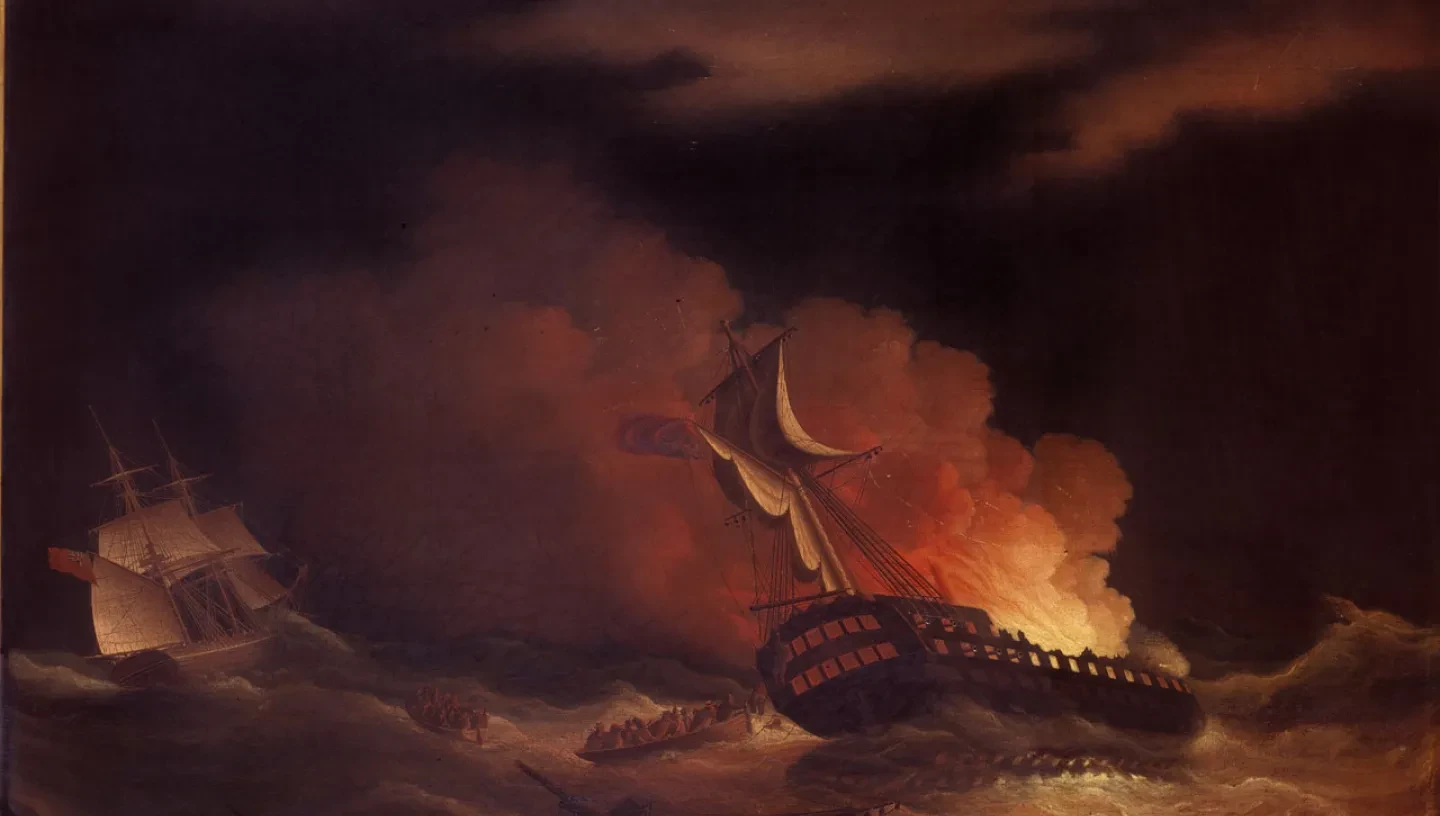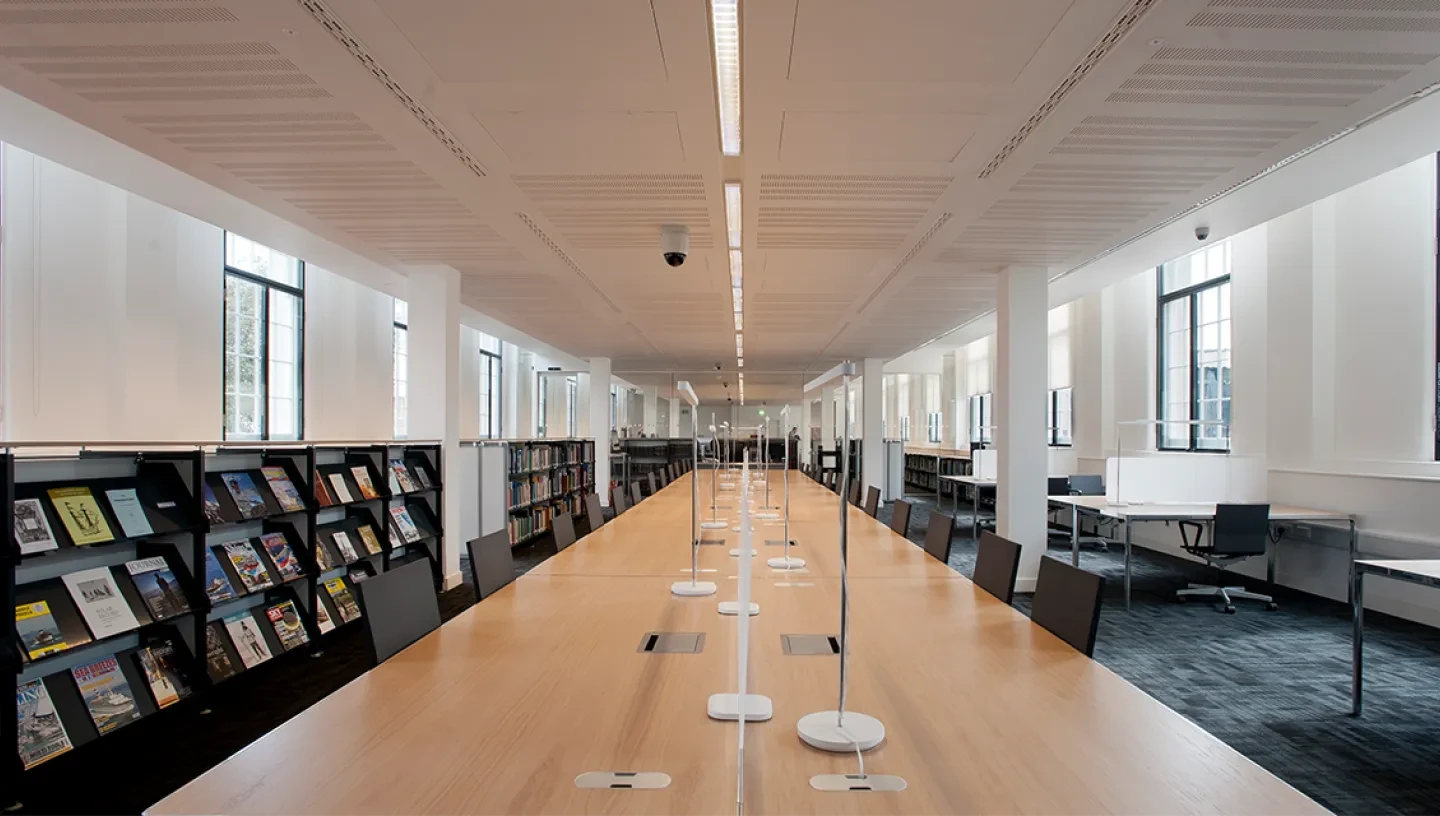
Across the museum’s collections can be found various objects and items related to the exploits of the renowned canoeist John MacGregor (1825-1892). However, our archives contain a small collection of manuscripts documenting his escape as a baby from a burning ship, the Kent.
John MacGregor was an intrepid canoeist whose published travel journals led to a rise in the popularity of canoeing as a leisure activity in Europe and the United States in the late 19th century. He designed his own canoes and went on extensive tours of lakes and rivers around the world. He also founded the Royal Canoe Club (RCC) in 1866 and American Canoe Association in 1880.
The Museum’s collections include the Rob Roy (RMG reference: BAE0114), the canoe used by MacGregor for his travels in the Middle East on the Jordan River, which he recounted in his popular 1869 book The Rob Roy on the Jordan (RMG reference: PBC0104).
After he retired from his canoeing expeditions, MacGregor presented the Rob Roy to the Royal Canoe Club, which in turn donated the canoe to the National Maritime Museum in 1991. It is currently on loan to the National Maritime Museum Cornwall.
MacGregor's travel journals
The Caird Library has several of his published travel journals, all of which include his own illustrations: Rob Roy on the Jordan, 1869 (RMG reference: PBC0104), A thousand miles in the Rob Roy canoe, 1866 (RMG reference: PBC0098), The voyage alone in the yawl Rob Roy Canoe, 1867 (RMG reference: PBC0216), The Rob Roy on the Baltic, 1867 (RMG reference: PBC0127), and Toil and travel, 1892 (RMG reference: PBE0273).
In addition to his sporting achievements MacGregor was a philanthropist who, amongst other activities, helped found the Shoeblack Brigade in 1851, an initiative to provide work as shoe shiners for boys who attended Ragged Schools in London. These schools were charitable organisations that provided an education for destitute boys.
From 1870 onwards he also gave hundreds of lectures around the country to raise money for charitable causes. Our archive collection includes several volumes of posters advertising his lectures (RMG reference: MCG/8).
The Loss of the Kent
However perhaps the most poignant items in our MacGregor collections relate not to the derring-do of his adult life, but to an event that befell him as a baby, when he was one of the youngest survivors of the loss of the Kent, an East India Company ship that caught fire at sea.
MacGregor was barely four weeks old when he and his parents set sail from Bristol on 19 February 1825, onboard the Kent, an East Indiaman bound for Bengal and China. However, ten days into the voyage, on 1 March, the ship encountered stormy weather in the Bay of Biscay, and subsequently went up in flames. According to a report in The Times on 8 March:
The heavy roll of the ship had displaced a cask of spirits, which an officer went below to see properly secured. At the moment when the cask was about to be replaced in its proper situation, a violent roll of the vessel caused a candle … to drop on the spirits that had leaked. They instantly took fire, which communicating to that in the casks, the hold was involved in flame and smoke, defying every effort to arrest the progress of the flames.’ (Accessed from The Times Digital Archive)
Fortuitously a brig of the Anglo-Mexican Company, the Cambria, en route to Mexico, was in the vicinity and able to rescue most of the Kent's passengers. The Times reported that one woman, 21 children, 4 sailors and 64 soldiers perished. The Cambria made it safely to Falmouth Harbour on 5 March.
The Kent and MacGregor in the National Maritime Museum collections
The Museum holds several artworks depicting the loss of the Kent, including the painting above by Thomas Butterworth (RMG reference: BHC3819).
Our MacGregor manuscript collection includes a volume with handwritten transcriptions of letters by his parents and others, giving their first-hand accounts of the disaster (RMG reference: MCG/4).
His mother, Elizabeth, wrote a letter to one of her sisters from Falmouth on 7 March 1825, in which she recounted having to leap from the Kent with her baby into a lifeboat, and then clamber on board the Cambria in the rough seas. She noted with joy that baby John was the first passenger rescued from the burning ship:
Joanna [her sister] … and I with my darling rolled in a blanket, were dropped in a small boat from one of the port-holes, forty feet high and launched into the mighty deep, the only chance of life …. How to get in [the Cambria] appeared impossible – the only method being to seize the moment the tremendous wave raised the boat near the deck and catch hold of a rope. I could not support my whole weight with one hand and hold my babe with the other. The Lord appointed it so that a gallant young midshipman cried out “Oh – trust your child to me”. He caught him by the clothes and threw him into the Brig. He was the first saved – oh, wonderful!’
John's father, army officer Duncan MacGregor, wrote a very detailed account of the event to his own father. He recalled the agony of watching the perilous journey of his wife and son in the lifeboat:
At this instant shall I attempt to describe my agony of mind? …. When I had handed in my infant and saw the boat lowering down into an ocean so tempestuous that no sailor on board thought it would live for a moment, I grew blind …. Twice the cry was that the boat was swamped … Sometimes it disappeared for several seconds. At last it reached the brig. I poured out my praises to the Lord… .
Later on in his letter he mentioned how close baby John came to death:
The baby’s tongue and mouth were as white as paper with the thrush, and since our arrival the medical men say that he could not have lived many hours longer on board.
He also recounted how the panic on the Kent and the rush for the lifeboats had fatal consequences:
Seeing that some of the sailors were preparing to cut away our boats with a view to provide for their own safety only, … myself and two other officers stationed ourselves conveniently with our drawn swords to cut down the first man who should touch the boats without orders, or dare to enter them until the means of escape had been presented to the poor women. It was impossible notwithstanding, to prevent a rush into the first boat that was launched, which was in consequence instantly swamped and the work of death was begun. The miserable men on board of it we saw struggle for a moment with the brakers, and then disappear for ever.
And he told of witnessing the Kent's final scenes:
The flames had now ascended to the rigging and masts, and the blaze from the immense mass illumined the whole heavens. As the fire reached the guns they went off, and it required some manoeuvring on the part of the brig to avoid them. The unhappy men who were still on board, were now seen climbing up the rigging, and their yells as the fire approached nearer became quite unearthly …. The magazine which was inundated early in the day had at last been dried up – the fire reached – the explosion took place – firmament was filled with the fragments of the once beautiful Kent – the sky was in a blaze for a moment, and the next all darkness.
The collection also includes two small pieces of wood, allegedly from the Kent, and perhaps they were salvaged by one of the MacGregors, awaiting their fate in the brig after the explosion.
In his letter Duncan MacGregor also wrote that, having come to terms with what he believed to be certain death, he decided to write a final message to his family:
…to prevent to yourself my dearest father, and to my brothers and sisters at home, the terrible years of anxiety which our fate would occasion to you, it would be well if I resorted to a plan which has often proved useful, of addressing a few parting lines to you – getting with some difficulty an empty bottle and corking it hard up, and afterwards throwing it into the deep.
Message in a bottle
Miraculously, his message in a bottle survived and was found washed up on the east coast of Barbados, at Bathsheba, 17 months later, on 30 September 1826. The original message, not in the bottle but framed, is included in our collection (MCG/1). The message is difficult to read but a transcription is inserted in the back of the frame:
The ship is on fire, Elizabeth, Joanna [Elizabeth’s sister], and myself, commit our spirits in the hands of our blessed Redeemer; His grace enables us to be quite composed in the awful prospect of entering into eternity. D. MacGregor 1st March 1825, Bay of Biscay.’
The collection even includes a note – and a pair of booties – which were given to the baby MacGregor by the writer and philanthropist Hannah More (1745–1833), in recognition of his extraordinary escape from the Kent (RMG reference: MCG/2). The letter, dated 23 May 1825, reads
Sweet Babe! Twice rescued from the yawning grave,
The flames tremendous, and the furious wave.
May a third better life thy spirit meet,
E’en life eternal at thy Saviour’s feet!
John MacGregor died in 1892 and this collection of papers was presented to the museum by his son-in-law in 1958.
Further reading
Hodder, Edwin, John MacGregor (Rob Roy), 1894, (RMG reference: PBD5961)









